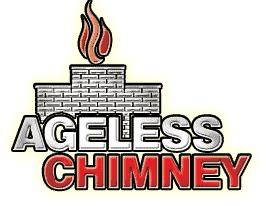Chimney Sweep in Greenwich Village, NY
What our clients say




Read About Us
Browse Masonry & Brickwork
contact us
Common Chimney Sweep Services for Homeowners in Greenwich Village, NY

Importance of Regular Chimney Sweep Services
Regular chimney sweep services are crucial for maintaining the safety and efficiency of your home. In Greenwich Village, NY, Ageless Chimney offers comprehensive chimney cleaning solutions that ensure your fireplace operates efficiently and safely. Scheduling regular inspections can prevent dangerous creosote buildup, which is a leading cause of chimney fires, and improve the overall air quality in your home.
Our professional team is dedicated to providing thorough and reliable services tailored to the unique needs of local homes. Trust Ageless Chimney to keep your chimney in top condition, ensuring a safe and healthy living environment for you and your family.
Experienced Technicians
Our team has years of experience serving homeowners in Greenwich Village, NY.
Customer Satisfaction
We prioritize your safety and satisfaction, providing reliable services in New York City.
Affordable Rates
Ageless Chimney offers competitive pricing without compromising on quality. Call 516-795-1313 for a free quote.

Comprehensive Chimney Cleaning
At Ageless Chimney, we provide thorough chimney cleaning services to homeowners in Greenwich Village, NY. Our skilled technicians use advanced tools and techniques to remove soot, creosote, and other debris, ensuring your chimney operates safely and efficiently. Regular chimney cleaning not only enhances the performance of your fireplace but also reduces the risk of chimney fires and improves indoor air quality.
We understand the unique needs of homeowners in New York City and tailor our services to meet those requirements. Whether you have a wood-burning or gas fireplace, our team has the expertise to handle it all. Our cleaning process is meticulous, covering every part of your chimney system, from the flue to the firebox. This comprehensive approach ensures that no harmful buildup is left behind.
Homeowners in Greenwich Village, NY can trust Ageless Chimney for reliable and professional chimney cleaning services. We take pride in our attention to detail and commitment to customer satisfaction. If you’re due for a chimney cleaning or have never had your chimney inspected, now is the time to act. Call 516-795-1313 to schedule your chimney cleaning service today and enjoy a safer, more efficient fireplace.

Chimney Inspections and Repairs
In addition to cleaning, Ageless Chimney offers detailed chimney inspections and repairs in Greenwich Village, NY. Our technicians are trained to identify potential issues, such as cracks, blockages, or structural damage, that could compromise the safety and efficiency of your chimney. Regular inspections are essential for catching problems early before they become costly repairs.
Our inspection process is thorough and includes a comprehensive assessment of your chimney’s interior and exterior. We use advanced diagnostic tools to ensure no detail is overlooked. If we identify any issues, our team will provide you with a clear and detailed report, along with our professional recommendations for repairs. This proactive approach helps you maintain a safe and functional chimney system.
Homeowners in New York City can rely on Ageless Chimney for prompt and professional chimney repair services. From minor masonry repairs to more extensive structural fixes, we have the expertise to handle it all. Our goal is to restore your chimney to optimal condition, ensuring it operates safely and efficiently for years to come. Contact 516-795-1313 to learn more about our inspection and repair services and schedule an appointment today.
